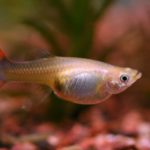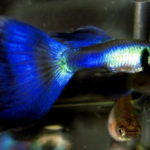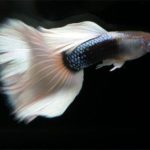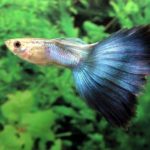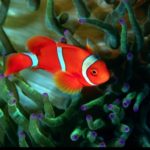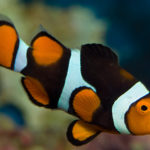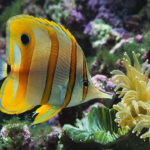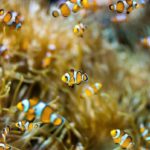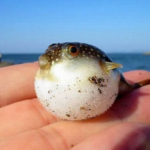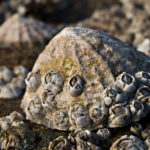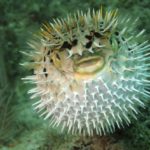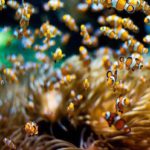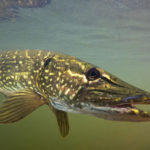Guppies
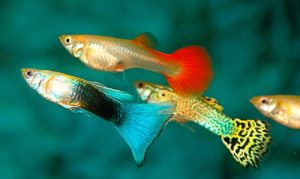 Guppies – unpretentious fish, with their content to cope even beginners in aquariums. Females can not boast of a bright coloration, but males shine with all the colors of the rainbow, especially the guppy tail is beautiful. Guppies are viviparous fishes, therefore at the moment of birth fry are already fully formed and can feed on infusoria, small fodder and independently swim.
Guppies – unpretentious fish, with their content to cope even beginners in aquariums. Females can not boast of a bright coloration, but males shine with all the colors of the rainbow, especially the guppy tail is beautiful. Guppies are viviparous fishes, therefore at the moment of birth fry are already fully formed and can feed on infusoria, small fodder and independently swim.
Guppies multiply even in small aquariums, the gestation period of fish is about 30-40 days, depending on the conditions of detention. Pregnant females are planted in a separate jar or aquarium with a temperature of 22-26 degrees. The time of deposition can be determined by darkening of the calf and rounded abdomen. Since females are prone to eating offspring, floating aquatic plants are placed in the aquarium. If the fish can not be born, this process is stimulated by adding a little fresh water and, raising the temperature by 2-4 degrees, sometimes the male is attached.
The natural habitat of guppies is the USA, southern and central America. Fishes keep flocks in fresh water bodies or estuaries of rivers or lagoons. In captivity, usually live 3-4 years. The main color of guppies: blue, gray, cream, silver or white. Additional impregnations can be black, red, yellow, green, blue or metallic. The fins of the guppies are small, rounded, while absolutely colorless.
As for the size, males have a length of 1.5-4 cm, thoroughbred representatives differ in long fins and variegated color. Also, males have anal fin, which is called gonopodia. Female guppies are larger, reach a length of 7 cm, they do not have an anal fin, but the eggs are visible. In many individuals, the natural color is gray, and on the body of scales in the form of a rhombic mesh.
Fish of this species were named in honor of the priest and scholar Robert Guppy, a native of England. He was collecting plants and soil samples on the island of Trinidad, when accidentally in one of the reservoirs saw brightly colored small fish. Looking closely, he noted that they do not lay eggs as most individuals, but immediately give birth to fry. In 1886, he returned home and spoke to the Royal Society with a report on the discovered tropical live-born fish. However, he was not believed that such small fish can be viviparous, and as it turned out, soon in the aquariums of the British Museum appeared hundreds of guppies, which multiplied from specimens brought to scientists.
